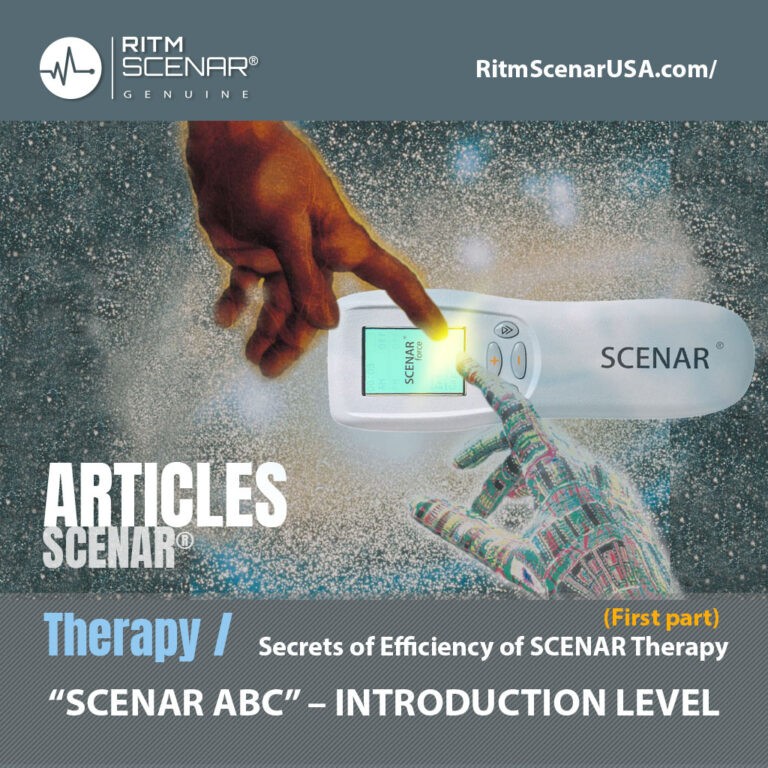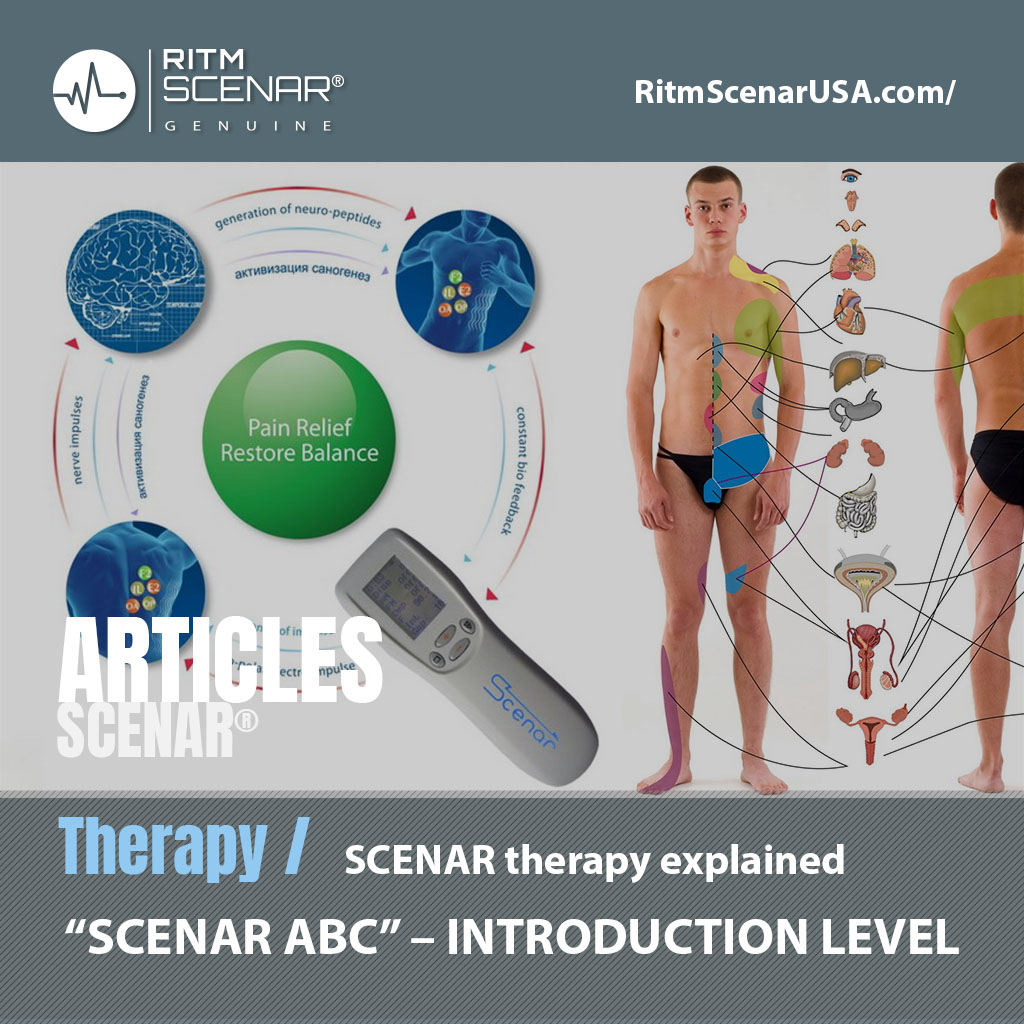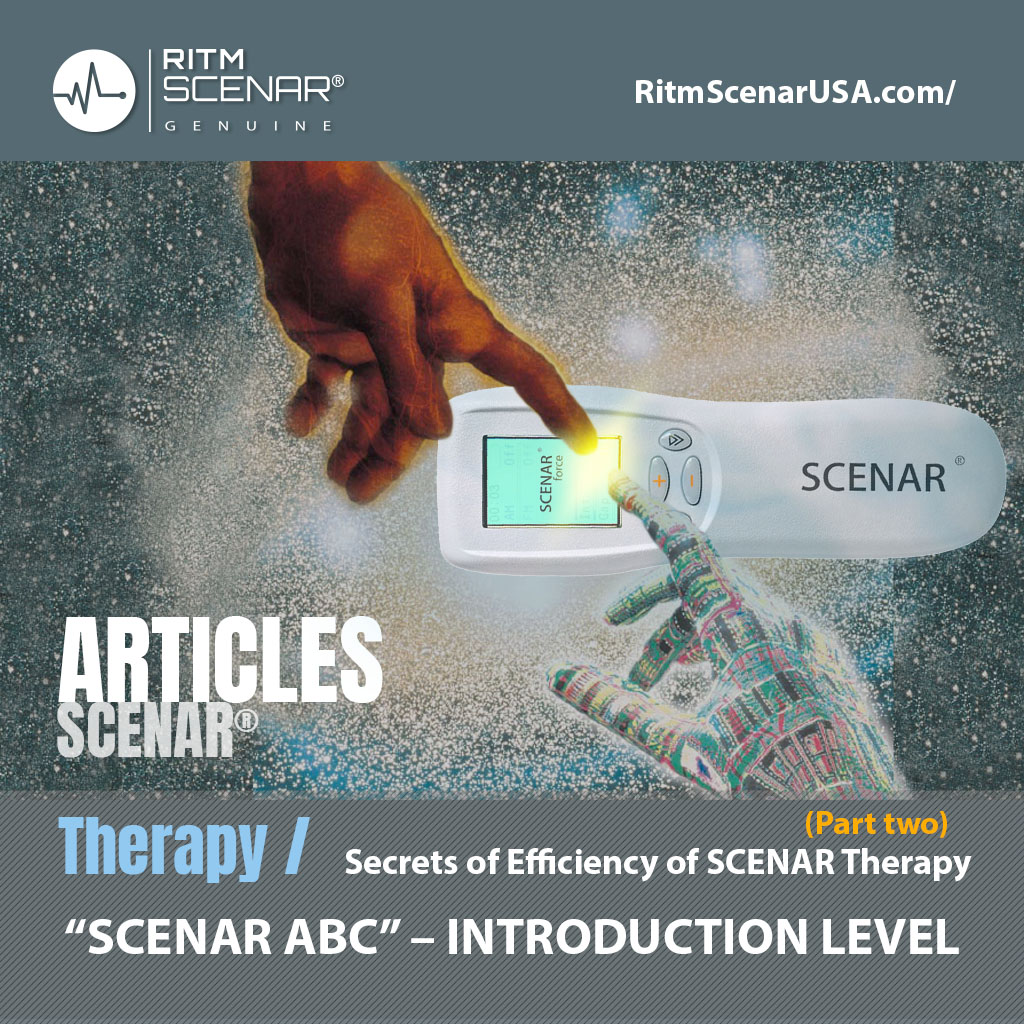What does SCENAR treat?
- pain of any origin
- inflammation
- swelling and allergic reactions
- spastic condition
- fever
- edemas
- cosmetic issues
- metabolic disorders
- weak general condition
- disfunction of organs and systems
- Pathological and recovery processes.
Generally speaking, in SCENAR therapy we treat an active complaint which replaces nosological diagnosis.
An active complaint is defined as:
– A complaint that exists in the patient at the time of the procedure and has a definite projection onto the skin (“here and now”).
– The maximum subjective discomfort at the moment of the treatment procedure: localization, nature, intensity and duration of pain or other subjective sensations.
If the patient has multiple active complaints, choose one major complaint with maximum subjective discomfort.
If a patient has no specific complaints (just a bad mood, general exhaustion) treat General Zone related to the complaint.
Do not use SCENAR device on patients:
- Who have a cardiac pacemaker, implanted defibrillator, or other implanted metallic or electronic device, because this may cause electric shock, burns, electrical interference, or death?
- Whose pain syndromes are undiagnosed (until etiology is established).
- With an individual intolerance of the electric current.
- With severe mental diseases.
- For self-treatment in case of alcoholic intoxication.
- With acute infectious diseases of obscure origin.
- Who are pregnant (do not work in the direct projection of the uterus and never in the 1st trimester).
Complications from SCENAR therapy are absent as such. Negative side-effects are also absent.
Main principle: you cannot do any harm! Whatever you do you do it right?
Basic Principles of SCENAR therapy:
- Dynamics – Stability: the goal is to achieve the stability of dynamic changes.
- Asymmetry – Small Asymmetry: the goal is to locate the area of asymmetry on the body, find Small Asymmetry within this area and treat it.
- Combination – Alternation: the goal is to alternate and combine various techniques and protocols, so that every session is different.
- Cyclicity: Dynamics of changes in living systems is always cyclical.
- Economics – Optimization: the goal is to optimize the treatment by saving efforts and time achieving the satisfactory result.
- Principle of small sufficiency: the goal is to achieve maximal results by smallest means (smallest area, shortest time).
- From simple to more difficult: the goal is to try the simplest first.
Where to work (or Designing SCENAR Procedure)
In general, the possible treatment area is the entire skin surface and approachable mucous membranes. However, in order to be efficient, you should concentrate the procedure on the certain strategic areas.
Treat the active complaint in the following order:
- Direct projection of the pathology (if known) on the skin, especially if this area is sensitive.
- Segment of the spine corresponding to the (level of the) complaint
- Symmetrical, opposite and reciprocal zones (horizontally, vertically, front-back).
- Dermatome of the complaint projection.
- General Zones.
- Skin areas corresponding to the sick organ (shown in the SCENAR manual) knowledge of channels of energy flow – would be superior.
If positive dynamics is achieved – stop the procedure, there is no need to go to another stage.
In the absence of the dynamics of the complaint expand the area and time of treatment.
When to treat?
SCENAR will usually help at any stage, but the sooner the treatment is given at any form of an acute condition, the faster the recovery. Recovery from a serious injury that would normally take months, may then happen in half the time or less.
The best time to treat is the time of an acute attack of the disease.
The worst time during the day (when it hurts the most) is the best time for treatment.
If it feels bad all the time, the best time for treatment is a period of maximum functional activity of the treated organ.
If all the above is impossible, treat when you have time for it.
How long to treat?
The time of the procedure is very individual and varies from a few seconds (e.g., “Bee Sting”) to days of non-stop treatment (stroke, acute kidney failure etc.).
The treatment time depends on the situation/ condition of the patient. Whatever you do and no matter how long, you should achieve improvement in patient’s condition. As we say in SCENAR therapy, you should achieve positive dynamics which means that the pain lessens more that by 50% during the procedure.
The duration of SCENAR treatment is determined by minimum sufficiency in area and time to obtain positive dynamics of the patient complaints (improvement of motor activity, pain relief, changes in the statics and dynamics of the spine).
The procedure should not last longer than 30 minutes. The optimal time is 15-20 minutes.
How often to treat?
There are no limitations and no strict rules, just a few recommendations.
SCENAR procedures in acute situations should be performed as often as each 1.5-2 hours or as soon as an acute complaint comes back. Chronic disorders require daily procedures or one treatment each 2nd or a 3rd day.
The duration of a treatment course may vary (from 1 procedure to a lifetime support). In average 10-15 sessions (until complaints disappear + 2-3 more sessions, to be on a safe side).
OLM/ ULM Blanket can be used as often and as long as you want.



1 Comment. Leave new
I was watching an older Dr Pete Peterson interview on a Scenar device. Please email me more information on this device and it’s cost.
Best Regards,